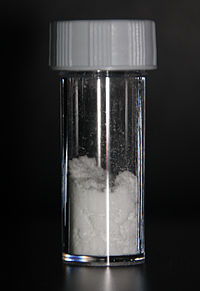L-glutamine

L-Glutamine
|
|
 |
|
| Names | |
|---|---|
|
IUPAC name
Glutamine
|
|
| Other names
L-Glutamine
(levo)glutamide 2-Amino-4-carbamoylbutanoic acid |
|
| Identifiers | |
|
56-85-9 |
|
| 3D model (Jmol) | Interactive image |
| Abbreviations | Gln, Q |
| ChEBI |
CHEBI:28300 |
| ChEMBL |
ChEMBL930 |
| ChemSpider |
718 |
| ECHA InfoCard | 100.000.266 |
| EC Number | 200-292-1 |
| 723 | |
| KEGG |
C00303 |
| PubChem | 738 |
| UNII |
0RH81L854J |
|
|
|
|
| Properties | |
| C5H10N2O3 | |
| Molar mass | 146.15 g·mol−1 |
| Melting point | decomposes around 185°C |
| soluble | |
| Acidity (pKa) | 2.2 (carboxyl), 9.1 (amino) |
|
Chiral rotation ([α]D)
|
+6.5º (H2O, c = 2) |
| Pharmacology | |
| A16AA03 (WHO) | |
| Supplementary data page | |
|
Refractive index (n), Dielectric constant (εr), etc. |
|
|
Thermodynamic
data |
Phase behaviour solid–liquid–gas |
| UV, IR, NMR, MS | |
|
Except where otherwise noted, data are given for materials in their standard state (at 25 °C [77 °F], 100 kPa).
|
|
|
|
|
| Infobox references | |
Glutamine (abbreviated as Gln or Q; encoded by the codons CAA and CAG) is an α-amino acid that is used in the biosynthesis of proteins. It contains an α-amino group (which is in the protonated −NH3+ form under biological conditions), an α-carboxylic acid group (which is in the deprotonated −COO− form under biological conditions), and a side chain amide which replaces the side chain hydroxyl of glutamic acid with an amine functional group, classifying it as a charge neutral, polar (at physiological pH) amino acid. It is non-essential and conditionally essential in humans, meaning the body can usually synthesize sufficient amounts of it, but in some instances of stress, the body's demand for glutamine increases and glutamine must be obtained from the diet.
In human blood, glutamine is the most abundant free amino acid.
Glutamine plays a role in a variety of biochemical functions:
On the level of tissue, glutamine plays a role in maintaining the normal integrity of the intestinal mucosa.
Glutamine is synthesized by the enzyme glutamine synthetase from glutamate and ammonia. The most relevant glutamine-producing tissue is the muscle mass, accounting for about 90% of all glutamine synthesized. Glutamine is also released, in small amounts, by the lung and the brain. Although the liver is capable of relevant glutamine synthesis, its role in glutamine metabolism is more regulatory than producing, since the liver takes up large amounts of glutamine derived from the gut.
The most eager consumers of glutamine are the cells of intestines, the kidney cells for the acid-base balance, activated immune cells, and many cancer cells.
In states where tissue is being built or repaired, like growth of infants, or healing from traumtic wounds or severe illness, glutamine becomes conditionally essential.
...
Wikipedia
